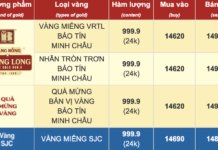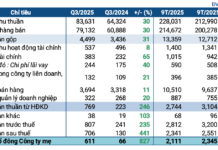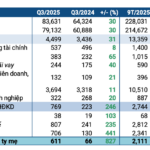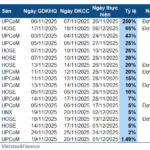Andy Boxall, a Digital Trends writer, has heard about a phone that many people are praising as better than the Samsung Galaxy S24. He decided to test it out to see if the reviews were accurate. Here is his impression.
Impressive Specs
Before inserting a SIM card into the Redmi Note 13 Pro Plus, I watched several reviews and YouTube videos that claimed it would be a great device if you didn’t want to buy an expensive smartphone like the Samsung Galaxy S24 or even the Apple iPhone 15 Pro Max.
Wow, I thought: it must be really special. Although not overly cheap, the latest Redmi phone looks good, at least in terms of specifications.
After using it, I can say it is good, but there is no reason to choose this device if you have the means to switch to a more expensive phone.
It can be said that impressive specs are the basis for many arguments as to why mid-range phones like the Redmi Note 13 Pro Plus are a wise choice over luxury models like the Galaxy S24 Plus or the iPhone 15.
The Redmi Note 13 Pro Plus has a large 6.67-inch display, a 200-megapixel main camera, a 5,000mAh battery, and 120W fast charging. These are impressive numbers that may even make more expensive phones feel embarrassed.

The Redmi Note 13 Pro Plus is priced at around $570 (cheaper in Vietnam, only about 10 million VND), half the price of the Google Pixel 8 Pro and the iPhone 15 Pro. Both of these devices do not have 120W charging like the Redmi product.
However, numbers don’t tell you how the phone will be used on a daily basis. I won’t criticize the Redmi Note 13 Pro Plus; it’s actually pretty good, but I want to point out that by spending more money, you’ll have a better experience.
The Redmi Note 13 Pro Plus has a 6.67-inch AMOLED display with a resolution of 2712 x 1220 pixels and a 120Hz refresh rate, covered with Gorilla Glass Victus.
It is bright and detailed enough, but has a slightly cool color tone compared to the warm hue of the iPhone 15 Pro display. Although it has a 120Hz refresh rate, the display does not include flexible self-adjusting features to save battery.
A downside of the phone is the lack of an always-on display feature. I consider this an essential feature on every phone, regardless of price, as long as the technology allows it. I don’t understand why the Redmi Note 13 Pro Plus omitted this.
I just want to see notifications when looking at the phone without having to touch it or press the power button.
I am truly impressed with the 200MP main camera of the Redmi Note 13 Pro Plus and the photos it produces. It is almost the phone’s strongest point. I love the colors, contrast, balanced exposure, and the amount of detail in good lighting conditions. It even performs well at night. If you only want to take photos with the main camera, the Redmi Note 13 Pro Plus will satisfy me.
But the other cameras on the phone are a bit disappointing. Adding a 2MP macro camera is something that is unacceptable nowadays. Although I like the tone and color of photos taken with the 8MP ultra-wide camera, it lacks detail when examined closely.
The device can record up to 30 fps at 4K resolution, but the quality is not great either. The Redmi Note 13 Pro Plus’ camera looks good on paper, but it doesn’t completely meet professional demands.

The Redmi Note 13 Pro Plus battery only takes 23 minutes to reach 100% charge in my testing. This can be extremely useful, but not for everyone. I usually charge my phone overnight, so charging it fully in 23 minutes or 5 hours is not an issue.
However, I used the battery for two days with a single charge – similar to the OnePlus 12 or the Galaxy S24 Ultra.
The conclusion is, don’t get caught up in the numbers related to charging speed; think about how you use your phone before buying a feature that you may not always use.
Outdated and Annoying Software
No matter how much money you spend on a new smartphone, I want to see which operating system version is installed on it.
The Redmi Note 13 Pro has the MIUI 14 interface, which may make you think it’s running Android 14, but it’s not. Instead, the new phone only runs Android 13.
There is no reason to defend this, regardless of whether there are many differences between Android 13 and 14 or not. This is a smartphone from 2024, and it should have the latest version of Android installed.
Xiaomi’s software update commitment is shorter than many other expensive phones, but this is understandable when you consider the price and the average user’s phone usage time.
But much worse than the software update commitment is the overall user experience. I don’t want to talk much about the software, but I have to do so on the Redmi Note 13 Pro Plus. There are too many intrusions.
Apps appear all over the screen, Android buttons instead of gestures are still the default control system, split notification bubbles are difficult to use with one hand, there are many preinstalled apps, and ads appear when I change the wallpaper. I want a usage experience that is not annoying like this.

Alternative Choices
The Redmi Note 13 Pro is a good smartphone but not overly exciting. Another choice that could address most of my disappointments with the Redmi phone is the Google Pixel 7a. It has the same price, newer Android 14 software, an always-on display, and an equivalent camera.
If the budget is slightly larger, the Nothing Phone 2 has a unique design, a powerful processor, a good camera, and interesting software based on Android 14. Or, an even better choice is the Google Pixel 8, which has all the advantages of the Pixel 7a with an improved Tensor G3 processor.
I love phones that offer good performance at a good price, and the Redmi Note 13 Pro Plus is one of them.
But I don’t like the intrusive experiences during usage. Unfortunately, the Redmi phone adds too many things, and that’s something that technical specifications will never tell you.
































